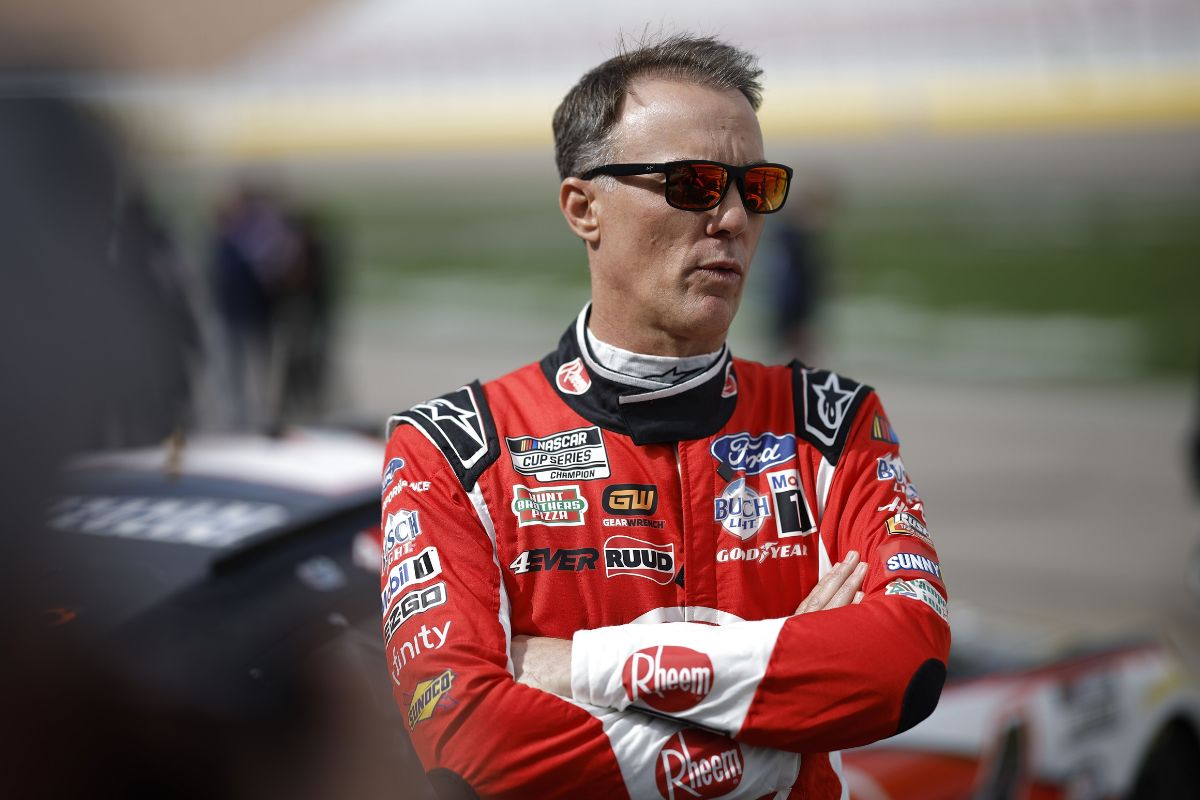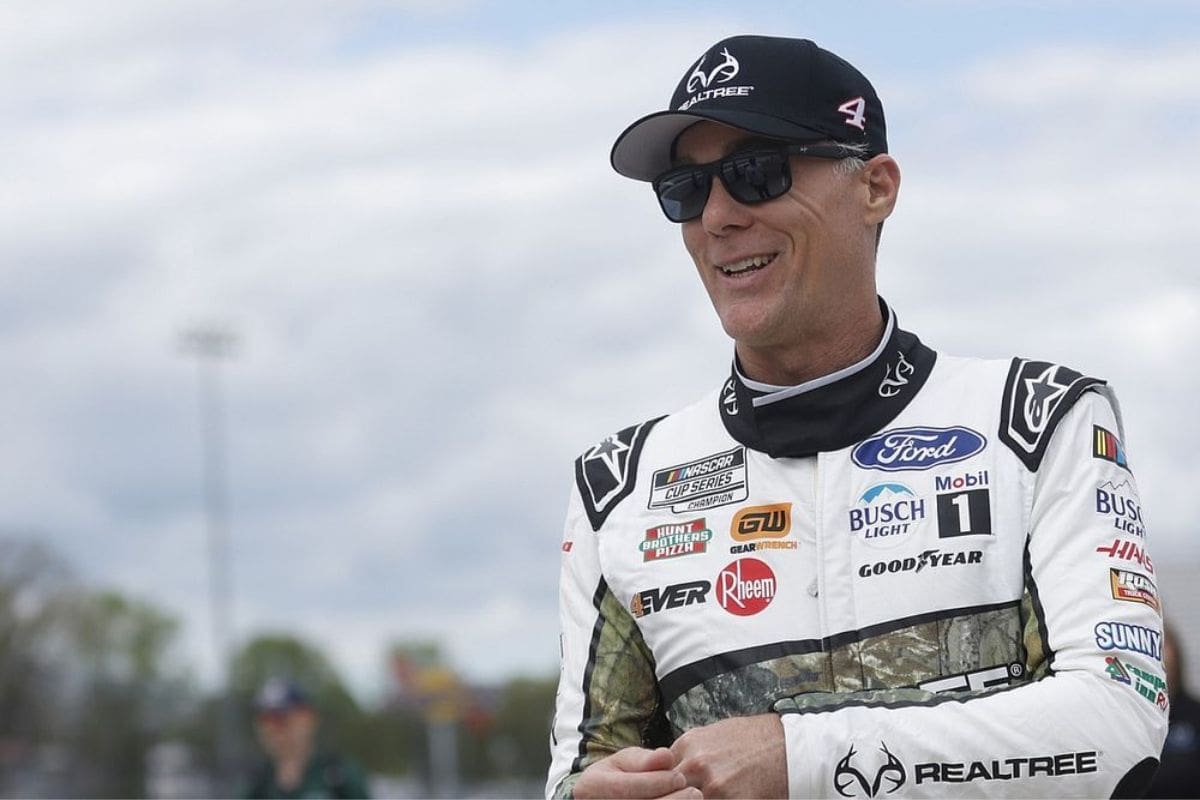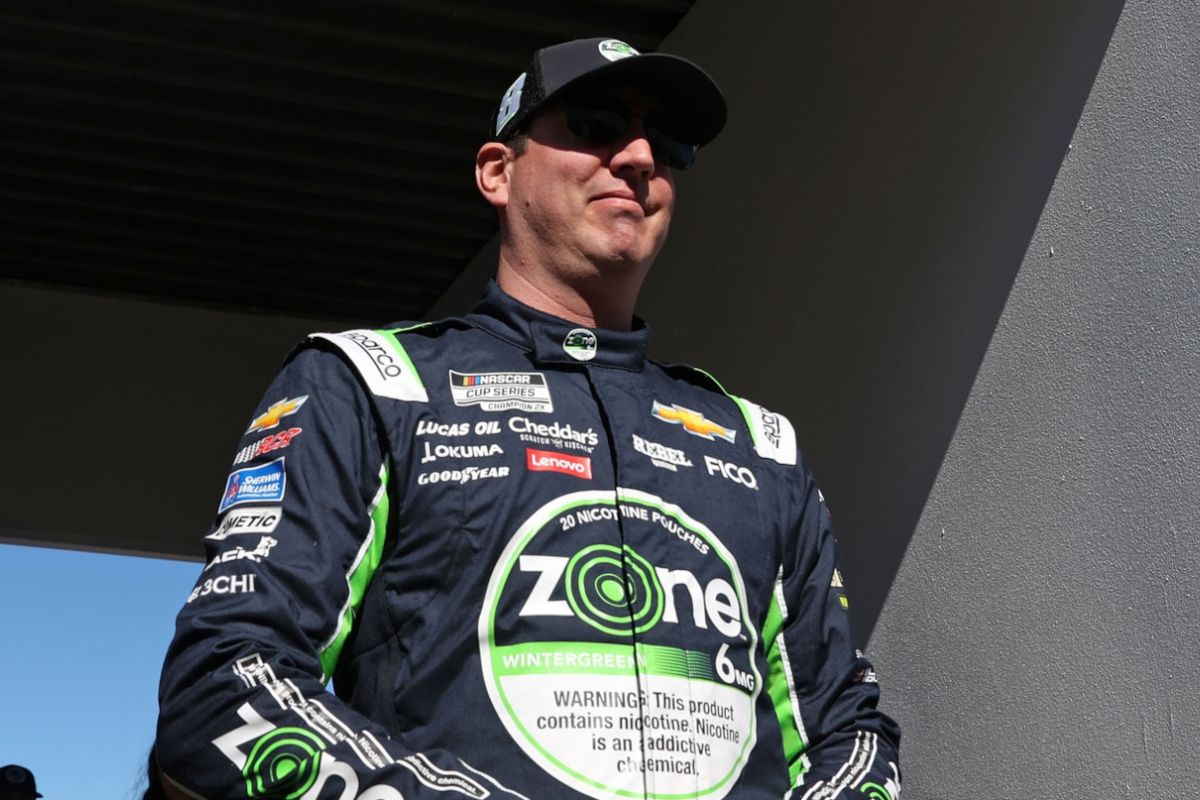Kevin Harvick Recalls Kyle Busch’s Dodge: In NASCAR history, few rivalries have been as electrifying as that between Kevin Harvick and Kyle Busch. A notable episode that stands out is when Harvick vividly recalled Busch’s strategic evasion during a high-stakes face-off, a tactic that highlighted the tactical depth and raw intensity of motor racing. This incident not only exemplifies the fierce competition between the two drivers but also marks a significant moment in their storied rivalry. Analyzing this event sheds light on the psychological warfare often present in professional sports and poses questions about how such moments influence the dynamics of respect and rivalry over time.
Key Takeaways
- Kevin Harvick and Kyle Busch’s rivalry peaked during confrontations in the 2005 Xfinity race and Darlington Raceway.
- Their rivalry included incidents of aggressive driving and heated exchanges.
- Both drivers were often summoned to NASCAR meetings to resolve post-race conflicts.
- Over time, their relationship evolved from fierce rivalry to mutual respect and sportsmanship.
- Their past confrontations have been discussed and reflected upon, highlighting their professional growth.
Kevin Harvick’s History of Dramatic Racing
Kevin Harvick’s racing career, marked by numerous dramatic confrontations and intense rivalries, represents the fierce competitiveness of NASCAR’s top series. Particularly in the early 2000s, Harvick’s on-track aggression and heated confrontations became symbolic of his racing style, contributing greatly to the racing drama that captivated fans.
One notable incident occurred in 2002 when Harvick, fueled by the adrenaline of the race, leaped over a car to confront Greg Biffle. This altercation was sparked by Biffle spinning Harvick out, highlighting not just the physical but the emotional intensity that defines NASCAR racing. Harvick’s reaction, grabbing Biffle’s collar in a heated exchange, was not just a moment of anger but a declaration of his fierce competitiveness and refusal to be sidelined without a fight.
Another significant episode unfolded in 2012 at Watkins Glen race, involving Juan Pablo Montoya. The confrontation, characterized by shoves and pushes post-race, highlighted the off-track tensions that often accompany on-track rivalries. Such incidents were not just about the moments they occurred, but about setting psychological edges and establishing dominance, both on and off the track.

Harvick’s Tussle with Kyle Busch
The rivalry between Kyle Busch and Kevin Harvick escalated substantially during the 2005 Xfinity race at Dover, marking a turning point in their controversial relationship. This event illuminated the intense rivalry that brewed beneath their competitive exteriors. As they maneuvered door-to-door, the tension increased into a noticeable clash. Their vehicles collided off Turn 4, a moment that not only defined the race but also set the stage for future on-track battles.
This confrontation was representative of the aggressive driving styles both drivers were known for. Harvick and Busch, each unyielding in their pursuit of victory, often found themselves entangled in racing conflicts that captivated fans and stirred controversy. The incident at Dover was a precursor to a series of driver confrontations that highlighted their tumultuous relationship. In 2011, Harvick was really close to starting a fight with Busch because he wrecked his teammate.

In subsequent races, their rivalry matured into a narrative of NASCAR seasons. Each meeting on the track promised competitive zeal and potential conflict. By 2011, their interactions had become a focal point of NASCAR discussions, particularly highlighted by their infamous encounter at Darlington Raceway.
Both drivers bumped into each other several times, but Kyle Busch delivered the final hit by nudging Harvick in the right rear. Harvick, from RCR, didn’t like that and kept it in mind to confront Kyle Busch after the race.
“I recall my shoulder still hurting because as I went in to punch him in the head, he decided to take off in his car. He knew he was gonna get punched in the head.” – (HARVICK)
Post-Race Confrontation and NASCAR Hauler Meeting
Following a heated exchange on the track, Kyle Busch and Kevin Harvick were summoned to a mandatory meeting inside the NASCAR hauler to address their conduct. This encounter was not merely about defusing the immediate tension but also about setting an example for managing post-race tensions effectively. The NASCAR confrontation had escalated rapidly, necessitating official intervention to maintain the sport’s integrity and safety standards.
“That was a very interesting post-race conversation. They pulled us into the NASCAR trailer. That’s when I was getting our invitation…we had a very fiery bunch of guys that just wanted to fight anybody. So we went up in the trailer. And Kyle and I had been in the trailer a lot together over instances.” – (HARVICK)
The hauler meeting, an essential component of NASCAR’s conflict resolution mechanism, served as a controlled environment where both drivers could be heard without the interference of team members or the media. This setup highlights NASCAR’s commitment to directly addressing issues of rivalry escalation among its drivers. In this particular instance, the meeting was critical as both Harvick and Busch had a history of intense confrontations, which could potentially undermine the decorum expected in professional racing.
“But that night, I’ll never forget it, because that was one of those nights that Joe Gibbs and Richard had to go into the trailer as well. They were supposed to be in charge of their drivers. Joe Gibbs said something, and I said something back. Joe actually wrote me a letter after that meeting.” – (HARVICK)
Analyzing the dynamics of this specific meeting, it’s evident that NASCAR’s approach is not just punitive but also corrective. The organization aims to not only penalize but also educate its drivers on the repercussions of their on-track behavior. This is important in ensuring that competitive spirit does not devolve into personal animosity, thereby preserving the sport’s competitive integrity and spectator appeal.
"He knew he was going to get punched in the head." @KevinHarvick remembers his 2011 Darlington incident with Kyle Busch.@KaitlynVincie | @MambaSmith34 | #NASCAR pic.twitter.com/rPYZnxQfGm
— HarvickHappyHour (@HarvickHappyPod) May 9, 2024
Resolution and Maturing of Relations
Despite the evolution of their past confrontations, Kevin Harvick and Kyle Busch have progressed from fierce competitors to mutual respecters and, ultimately, friends over the years. This transformation highlights a significant path of professional maturity and sportsmanship growth that both drivers have undergone. Initially marked by frequent clashes, their relationship took a crucial turn after a notable incident that involved both their team owners being reprimanded. This event catalyzed a shift towards conflict resolution, emphasizing the importance of managing competitive tensions constructively.
The aftermath of their confrontations led to interventions by influential figures like Joe Gibbs, who even extended the gesture of writing a letter to Harvick. Such actions were instrumental in softening tensions and fostering a dialogue oriented towards reconciliation and understanding. Over time, the fiery rivalry transformed into a friendly rivalry, characterized by a mutual respect that acknowledges each other’s talents and contributions to the sport.

Softening of Relations
Reflecting on their past confrontations, Kevin Harvick and Kyle Busch have gradually shifted from opponents to collaborators on the racetrack, showcasing a significant softening of relations over time. This evolution from a heated rivalry to a more friendly rivalry is marked by a transformation in their competitive interactions and personal rapport.
The crucial moment in this shift appears to have been around 2014, following the closure of Kevin Harvick Incorporated. Post this period, both racers have displayed an improved understanding and mutual respect which redefined their on-track battles. They adopted a strategy of giving each other adequate space during races, recognizing when one was faster than the other, thus fostering a professional competition that prioritized clean racing techniques over aggressive tactics.
This newfound friendship was particularly evident in 2018, famously referred to as the year of the ‘Big Three’ – involving Harvick, Busch, and Martin Truex Jr. Their rivalry was characterized by:
- Mutual respect: Acknowledging each other’s skills and allowing space on the track.
- Fair competition: Engaging in hard but fair races, avoiding the pitfalls of past confrontations.
- Shared victories: Alternating wins among themselves, which kept the competition intense yet respectful.
“From 2014 on, we’ve been fine. We give each other space; we know when each other is faster. Like in 2018, when it was the Big Three, it was me, Kevin, and Martin [Truex Jr.]. Martin would win, Kevin would win, Kyle would win. Martin would win, Kyle would win, Kevin would win. It kept going, and we never really had the moments that we were at each other’s throats. We were racing another hard but clean, and may the best man win.” – (Busch)
News in Brief: Kevin Harvick Recalls Kyle Busch’s Dodge
The intense rivalry between Kevin Harick and Kyle Busch has greatly evolved from its origins marked by aggressive confrontations.
Over the years, both drivers have shown considerable growth, moving from fierce competitors to displaying a mutual respect indicative of their maturity and professionalism in the sport.
This transformation not only underscores their personal development but also enriches the competitive spirit of NASCAR, fostering a healthier and more respectful racing environment.
ALSO READ: Kevin Harvick Picks Martin Truex Jr. as Darlington Favorite
